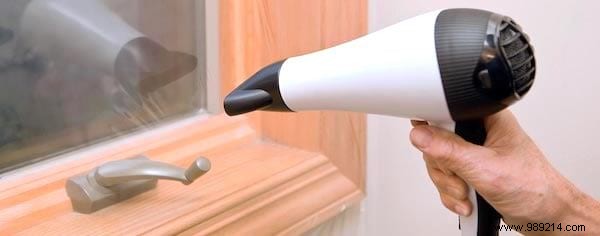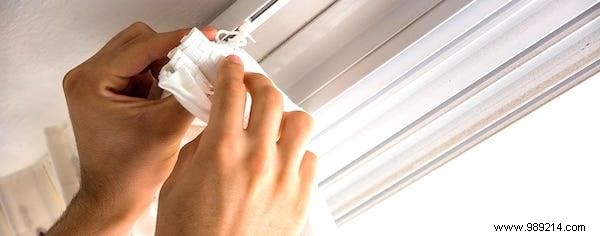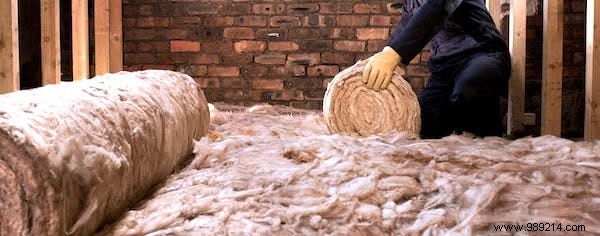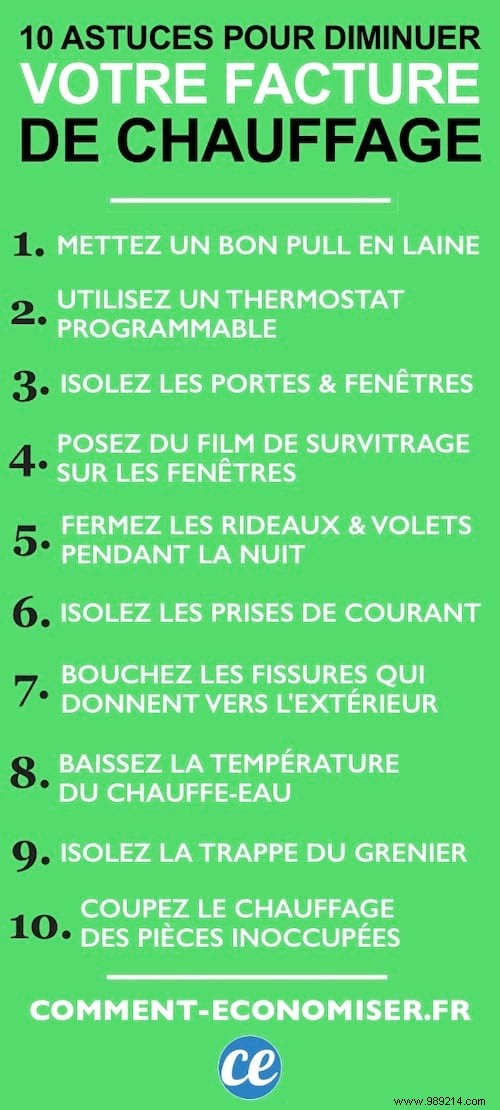
Electricity, gas… it doesn't matter what type of heating.
In winter, energy bills are super high.
Even when setting a budget, these bills hurt the wallet!
Fortunately, there are inexpensive tips to reduce energy losses and thus reduce your heating bill.
Here are 10 tips to save a lot of money on the heating bill . Watch:


The easiest and cheapest way to reduce your heating bill? It's to lower the temperature!
So, instead of pushing the thermometer to 23°C, set your thermostat to the ideal temperature of 19°C (or lower) instead, and throw on a sweater if you're not warm enough.
The savings made by putting on a pullover are considerable.
In fact, lowering your heating by just 1 degree can reduce your heating bill by 7%.
Pro Tip: make your own hand warmer out of a thick pair of socks. Fill one of the socks with rice and insert it into the other. Take care to orient the open side of the sock with rice towards the bottom of the other sock, so as to prevent the rice from spilling out. Heat your little homemade hand warmer in the microwave for about 30 seconds, and it will keep your hands warm for 15 minutes.
To discover: The Homemade Cherry Stone Hot Water Bottle To Relax Without Expensing Too Much.

Programmable thermostats help you significantly reduce your heating bill.
They allow you to automatically lower the temperature by a few degrees and heat your home according to your needs.
For example, when you sleep, you can program the thermostat to automatically lower the temperature between 16 and 18°C.
Similarly, program your thermostat to automatically lower the temperature to 15°C when you are away from home.
Very practical when you are at work or on vacation.
But be careful not to lower the temperature too much either!
Indeed, below 15°C, there is a risk of the pipes freezing. Thus, avoid setting the thermostat to literally freezing temperatures while you are away.
By programming your thermostat to lower the temperature by 4 to 6°C when you are not at home, you will save up to 10% on your heating bill.
To discover: According to Scientific Studies, Sleeping WITHOUT HEATER Is Better For Your Health.

It is estimated that 7 to 12% of heat loss from homes is due to poorly sealed doors and windows.
Fortunately, if you go to your DIY store, you will find an entire section dedicated to sealing the house and fighting drafts.
The door and window seals come in the form of a roll of foam or adhesive rubber.
Simply apply the sealant around door and window frames to insulate them and create a perfectly sealed seal.
Do you see daylight under the doors that lead out of the house? So install a door sweep to prevent cold drafts from cooling your home.
Pro tip: to combat drafts, you can also make your own door weather stripping. Take an old stocking or a very thick pantyhose (but not with holes). Cut out one of the legs and stuff it with rice, kitty litter or cotton stuffing. Sew the opening and attach the bead to the bottom of the door.
To discover: The Unstoppable Trick To Insulate Your Front Door Like A Pro.

Single-glazed windows and patio doors are a major heat loss in your home – even with perfectly sealed joints.
Investing in double-glazed windows is a good investment, but it's expensive!
While waiting for a window change, there is an economical alternative.
The trick is to use overglazing film like this, which you can find in all DIY stores.
Insulating and invisible, the film adjusts to the size of all windows.
In addition, it is easy to install:the adhesive side is applied to the interior side of the glass, and it is stretched with the help of a hair dryer. The tutorial is here.
And in an emergency, you can replace the overglazing film with cling film! Simply stretch the cooling film over the window frame.
Pro tip: to insulate your windows inexpensively, you can also cover them with bubble wrap! Click here to discover the trick.

Yes, curtains and shutters are not there just to decorate your windows!
Before double-glazed windows and insulation seals, how did our grandparents protect themselves from drafts and heat loss?
It's simple:at night, they closed the shutters and used large, very thick curtains, which went from floor to ceiling.
Curtains are indeed a great (and inexpensive) way to increase the efficiency of your heating system, even if your curtains are not super thick.
Another tip:in winter, south-facing windows receive the most sunlight.
So, for these windows, remember to open the curtains and shutters during the day to absorb as much heat as possible from the sun.
At the same time, to avoid creating a draft of cold air, also remember to close the curtains and shutters of the other windows (those that do not face south).
Finally, during the night, close the shutters and curtains of the south-facing windows.
By using shutters and windows, you can reduce 10% heat loss from your home. Find out how here.

Outlets on walls that face the outside are one of the most common causes of heat loss.
This is because there is often a gap between the insulation inside the wall and the electrical outlet box, which creates a current that is difficult to detect.
The solution ? Unscrew and remove the cover of the sockets on the walls that face the outside.
Then seal the gaps around the case with silicone sealant or expanding foam.
Finally, before screwing the cover back on the socket, put on a windbreaker, which you can find in all DIY stores.

Throughout your home, there are pipes running through walls, ceilings, and floors.
Over time, more or less large cracks may appear and allow outside air to infiltrate your home.
So, check these places and plug the holes with filler or expanding foam.
Pay particular attention to pipes under sinks and where pipes lead into unheated spaces, such as basements.

In winter, heating the air in your home is only part of the energy bill:there is also water.
On average, a water heater accounts for around 17% of household energy consumption.
The easiest way to reduce the energy consumption of a water heater? It is to lower its temperature by setting it to 49°C .
By lowering the water temperature by 4°C, you can cut your water heating costs by 5%.
Another way to make your water heater even more efficient is to insulate the hot water tank.
Simply wrap it with an insulating material, taking care not to cover the thermostat or the burner of the water heater. Find out how here.
Consult the instruction manual for your water heater for specific instructions on insulating the hot water tank.
Last but not least about the water heater is to descale it regularly.
Indeed, a scaled-up water heater consumes much more energy to heat the same amount of water than an appliance in good condition.
To find out how to descale your water heater yourself, go here.

Climbing into an unheated and uninsulated attic in the middle of winter? No thank you, it's like entering an igloo!
By insulating your attic floor with glass wool, you can prevent significant heat loss through the ceiling.
Experts recommend laying roll-out glass wool with a thickness of at least 18 cm.
And above all, don't forget to insulate one of the most strategic places in the attic:the access hatch!
Thus, you can install a tight and highly insulated access hatch, like this one.
Or, to upgrade an existing access hatch, you can use a hatch cover, like this one.
To discover: How to Turn Your Attic into a Home Cinema.

Do you have an office or a spare bedroom that you are not using? So, no need to heat them for nothing!
Close doors and turn off radiators in unoccupied rooms in your home.
This way, you avoid wasting energy to heat an unused room in the house.
And to keep the heat inside the rooms you frequent, also remember to close the door.
To discover: What Is The Ideal Temperature In Each Room In Winter?

Click here to easily print this guide in PDF.
There you go, by following these 10 useful tips, you can significantly reduce your heating bill .
The little extra? Most of these tricks are inexpensive (or even free) to implement :-)
This means less expense for you and even more money in your wallet!

The annual maintenance of the boiler is not only important, it is also mandatory.
Carried out by a professional, the maintenance concerns the heating circuit of your home, the condition of the burners, the settings, the age of the equipment and the sweeping of the flue.
A well-maintained boiler allows you to reduce your energy consumption by 12%.
In addition, annual maintenance increases the life of your device by up to 3 times and reduces the risk of failure by 5 times.
The lowest maintenance prices for a gas boiler start at €75, and can go up to €180 for more complete maintenance.
Have you tried these tips to reduce your heating bill? Let us know in the comments if it worked for you. We can't wait to read you!